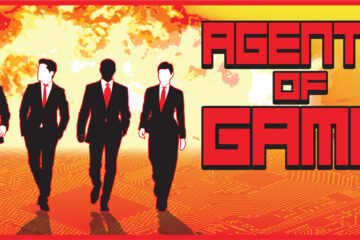CAPCOM’s Dead Rising main protagonist, Frank West returning a defective TV during a Black Friday event. © 2006 CAPCOM
It had been nine years since I originally bought Dead Rising for the XBOX 360 in the Summer of 2006. It was hard to believe that it had been so long since I bought that game. I remember when I first heard about the game and saw an ad for it on the original XBOX Marketplace, you know, with the blade guide system thinking that it reminded me a lot of George A. Romero’s “Dawn of the Dead.” The game which takes place entirely inside a shopping mall, much like Romero’s film, starts in a small community in Willamette, Colorado where Dead Rising’s story focuses it’s zombie tallying tale. In fact, not too much later after its release Dead Rising came with a creative commons disclaimer due to it’s strong, but not identical resemblance to the film. This only fueled my excitement to play the game. So, I picked up my copy from a local game store on the day of release in case some sort of legal issues were to surface shortly thereafter. I excitedly played the game to learn the truth of the zombie outbreak in Willamette, the mental affects of people which turned them into psychopath boss battles, and how incredibly frustrating the survivors’ A.I. was, but also to earn my third set of achievements in a retail XBOX 360 game. When I first started playing I thought it would be an easy acquisition of 1000 points to my gamerscore, but I had no idea it would take a year shy of a decade to finally earn every last achievement in that game. And when I finally did my emotional response was very, very, very unexpected.

First, let’s talk about Dead Rising as a game. The game Dead Rising was developed and published by the video game industry titan Capcom, who is famous for countless memorable video games which includes the Street Fighter, Resident Evil, and Mega Man franchises. On August 8th, 2006, exclusively for the XBOX 360 home video game console, Dead Rising was released with Keiji Inafune, the father of Mega Man, producing the game. One might surmise this information due to the innumerable homages to Mega Man throughout the mall in Dead Rising which can be found on posters, movie showtimes, toys, and even unlockable clothing, such as the Real Mega Buster, the most powerful weapon in the game if you earn Zombie Genocide Achievement. With Capcom as publisher and Inafune as producer, Dead Rising became a commercial success among the XBOX 360’s initial year as a video game console, selling over one million copies by the end of 2006. It was apparent that the public had fallen in love with the main character Frank West, a photojournalist who is helicoptered into Willamette to investigate the happenstance of the small quarantined town where he must reveal the truth of the outbreak, survive the zombie horde, and battle psychopaths all while earning one of the first sets of unique, fun, and challenging achievements on the XBOX 360 at that time.
Needless to say, due to Dead Rising’s popularity, CAPCOM would be cashing in on converting this stellar game into a franchise at this point. They made many sequels on the XBOX 360, XBOX Arcade, and the XBOX ONE over the next decade which all did well in reviews and in sales. But, I’m not here to talk about the other Dead Rising games, nor the financial success of the series, the genius of Keiji Inafune, or the strategic insight that CAPCOM possesses as a video game producer. I’m here to talk about how this incredibly creative game known as Dead Rising and it’s Transmissionary Achievement killed me as a recreational gamer.

As you may or may not know there is an interesting psychological response that happens between you, your brain, and the video game when an achievement pops up on screen. It releases a rush of dopamine, a cocktail of ions that flood across your neurons releasing that, “oh, so good” feeling and joy when earning said achievement(s). To put it simply, when you get an achievement, complete a mission, find a secret, or finally complete a game your brain releases this dopamine which gives you a little shot of emotionally success throughout you cerebellum. This happens in real life too when you successfully score that cute person’s phone number at the bar, you find an Andrew Jackson on the ground, or you receive a raise at work. All of these examples release dopamine into your brain (*I’m really not, going to go into much of the logistics of it any further than that, but if you want to know more about it, I’d suggest checking out this fantastic video by MatPat of Game Theory on YouTube). This release of dopamine is definitely one benefit of the gaming lifestyle, as players can get these little extras boosts of happiness for “accomplishing” something.
But, before the XBOX 360 era, achievements did not exist, at least in a literal sense. Figuratively any game is riddled with these said achievements. It’s like when you first found out that the 2nd player in Duck Hunt on NES controlled the ducks, or when you decide to chuck the Master Sword into the Great Fairy Fountain in the Dark World in The Legend of Zelda: A Link to the Past on SNES and the Great Fairy in return gives you back the 4th, and strongest Master Sword possible, or when you rescue every Little Sister in Rapture in Bioshock on XBOX 360 you are rewarded with that incredibly touching ending (if you didn’t think the ending was touching, you might be a sociopath, which you can find out more about here). These player interactions with the game make you continue playing, continue searching, and continue exploring every corner of the games we play. With the introduction of achievements from Microsoft, they successfully found a way to hook gamers to get the most out of their games and keep playing them: by introducing achievement points which add to your gamer machismo known as the “gamerscore.”

Since, Dead Rising was my third retail game for the 360, I was still learning about achievements, their points, and adding said points to my gamerscore. I decided around this point (no pun intended) that I would continue with my routine of “mastering” games, a term meant for achieving a one hundred percent for completing the game, and Dead Rising was now on that list like Condemned: Criminal Origins before it. I remember pausing the game, going to the dashboard, and opening up the blade that revealed the list of achievements in Dead Rising. I found easy achievements like Bullet Point, ‘fire 1,000 bullets’, Costume Party, ‘place novelty masks on at least 10 zombies’, and Item Smasher, ‘break at least 100 items’, all which required you doing so in one full play through. I scoffed at these because they seemed easy, and then I found the harder achievements like Saint, ‘rescue 50 survivors’, Frank the Pimp, ‘escort 8 female survivors at once’, and 7 Day Survivor, ‘survive for 7 days in Infinite mode’, and of course, the dreaded, Transmissionary achievement, ‘receive all calls from Otis’. Of course, I had no idea how much more complicated earning all these achievements would be and completing the game until much, much later. Plunging myself head first into the game I found myself shuddering at the ominous cacophony of music that accompanied the opening title screen.
I have this rule where if I play a new game for the first time, I do not look at any guides or information or walk through’s because it may dissuade me from enjoying the game and what I wanted to do in the moment. It’s a great way to play because it allows you to naturally go about the game the way you want to. So, I began playing and within the first month I had earned most of the achievements in one play through. Of course, the more difficult ones I knew I would have to go back and get, but as I picked off the easier achievements like killing 1,000, 10,000, & 53,594 zombies in a single play through by running the entire town of Willamette over with a car and earning the Real Mega Buster weapon, I had earned roughly 40 out of the 50 achievements in 40 days. It almost seemed too easy.
It was thrilling seeing that little notification at the bottom of my screen pop up time and time again telling me that I had unlocked an achievement though. Did it come with unlockable clothes? Did I earn a gamer picture too? These questions and this dopamine rush from the “badoink!” noise from my 360 kept me wanting to earn more achievements. But, that’s just the thing, as more and more games began to pour out like Pac-Man, Dig Dug, Saints Row, Gears of War, and Marvel Ultimate Alliance, I found it harder and harder to stay focused on completing the game, so I attempted to go for the remaining achievements such as Saint, Frank the Pimp, Tour Guide, and Transmissionary all in one go in October of 2006 and complete the game in my last attempt. But, if things always went as well as we wanted them to than we wouldn’t have a story on our hands would we?




